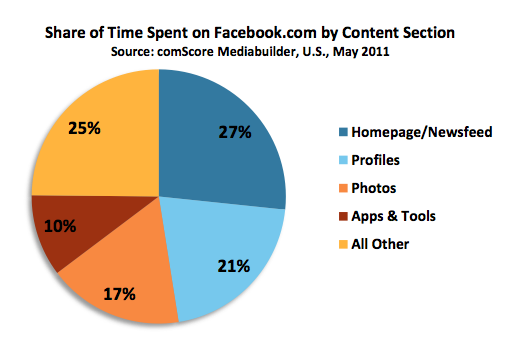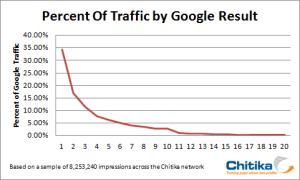For the November 25th issue of The New York Review of Books, author Zadie Smith contributed an essay titled “Generation Why?” Ostensibly, the column was a review of Aaron Sorkin’s much-ballyhooed film, The Social Network, but Smith clearly had bigger fish to fry than nerdy billionaires (especially since Sorkin and director David Fincher had already undertaken this task so elegantly themselves).
No, the issue at stake was not Facebook but the “generation” for which it was created and for whom, perhaps, its existence circumscribes theirs. Smith, in attempting to extricate Facebook from its inevitable foundation myths, nevertheless concludes that she will someday “misremember my closeness to Zuckerberg [she, too, was on Harvard’s campus for Facebook’s birth in 2003], in the same spirit that everyone in ‘60s Liverpool met John Lennon.” And yet an acute sense of separation haunts her, as much for its seeming incongruity (Smith is only nine years Mark Zuckerberg’s senior) as for its depth.
“You want to be optimistic about your own generation,” Smith muses, with a touch of nostalgia. “You want to keep pace with them and not to fear what you don’t understand.” She would be wise to heed her own advice. For what she contends in “Generation Why?” – that for the unwashed masses who fancy Facebook, Twitter, et al among life’s requisites, their online reincarnations have themselves become unhinged from, or even superseded, reality – is as emblematic of the anachronisms of the old-guard cohort (whom she affectionately dubs “1.0 people”) as it is a functional indictment of their successors.
The New Yorker’s Susan Orlean stumbles into the same trap, albeit somewhat more amiably. On her blog, “Free Range,” she posits a new hierarchy of friendship: the Social Index, a ranking of relationships by the relative frequencies of online vs. offline contact. “Human relationships used to be easy,” she explains. But “now, thanks to social media, it’s all gone sideways.” Orlean then proceeds to delineate these subtle distinctions: between “the friend you know well” and “the friend you sort of know” and “the friend, or friend-like entity, whom you met initially via Facebook or Twitter or Goodreads or, heaven help us, MySpace,” and so on. Wisely, she keeps the column short and employs a jocular tone, one whose comic value is reaffirmed by her promotion of the Social Index on – where else? – Twitter, using the hashtag #socialindex.
But one can detect a beguiling undercurrent of cynicism beneath Orlean’s evident joviality. What Zadie Smith and Susan Orlean share – in addition to their niche of the “celebrity lifestyle” whose attainment, Smith assures us, is the raison d’être of the Facebook generation – is the creeping suspicion, despite reaching a career zenith, of their continuing exclusion from the proverbial “Porcellian Club” of Zuckerberg’s collegiate fantasies. This, then, is a fate to which both they and those they pity are likewise consigned. The irony, of course, is their refusal, or inability, to identify these “People 2.0” as their kindred spirits.
Smith opts instead for the appeal to authority. In this case, that role falls to Jaron Lanier, a “master programmer and virtual reality pioneer.” (Smith, who is 35, quickly reminds us that Lanier, 50, is “not of my generation,” an assertion whose brashness once more belies her commonalities with that perpetually group-conscious underclass of Facebookers.) Quoting extensively from Lanier’s book, You Are Not a Gadget, Smith appropriates the tech-philosopher’s arm’s-length aspect toward technology as her own, spraying the reader with snippets of his wisdom. (In the book’s preface, Lanier cautioned against this Girl Talk-esque brand of mishmash, lamenting that his words would be “scanned, rehashed, and misrepresented by crowds of quick and sloppy readers into wikis and automatically aggregated wireless text message streams.”)
But Smith and Lanier have separately, and preemptively, doomed themselves to contemporary irrelevance by adhering to a retrograde narrative of the modern condition. Together, their worst nightmare is the narrowing of human existence into unintentionally confined spaces. This process takes place via “lock-in,” a series of inadvertently interacting steps which, taken together, preclude the possibility of reversal or alteration. Such was the case, Lanier argues (and Smith dutifully recounts), in the invention of the MIDI file type, a once-cutting edge format for storing and playing digital music, whose binary limitations preternaturally forced the beautiful infinity of analog melodies into a prepackaged sepulcher of bits and bytes. Once the standard had been formalized, the jig was up: there was no turning back. Music had forever changed, and not necessarily for the better. Lanier unwittingly reformulates – on behalf of the self-described “software idiot” Zadie Smith – these same fears in regard to social media.
These visions of doom are misplaced. One can feel almost viscerally the bored sighs emanating from countless millennials’ diaphragms as Zadie Smith ages before their very eyes: “When a human being becomes a set of data on a website like Facebook, he or she is reduced. Everything shrinks. Individual character. Friendships. Language. Sensibility. In a way it’s a transcendent experience: we lose our bodies, our messy feelings, our desires, our fears.” Such generous hyperbolizing obscures whatever consideration Smith’s fretting may warrant on the margins. If rescuing this Lost Generation is her utmost objective, then her plea for sanity, easily mistaken for groveling, will scatter Zuckerberg’s millions of disciples like so many cards in a two-bit parlor trick.
Notably, Zadie Smith gently ridicules the Facebook era’s emphasis on connectivity, remarking snidely that Zuckerberg “used the word ‘connect’ as believers use the word ‘Jesus,’ as if it were sacred in and of itself.” The quality of those interactions, she worries, is not worth the minimal effort exerted to vivify them. And yet she comes agonizingly close, on multiple occasions, to grasping the essence of this generation that remains simultaneously adjacent to, but seemingly unreachable from, her own. “Watching this movie, even though you know Sorkin wants your disapproval, you can’t help feel a little swell of pride in this 2.0 generation,” Smith concedes. “They’ve spent a decade being berated for not making the right sorts of paintings or novels or music or politics. Turns out the brightest 2.0 kids have been doing something else extraordinary. They’ve been making a world.”
Sound familiar? It should. The specter of John Lennon, the one “that everyone in ’60s Liverpool met,” haunts every word of “Generation Why?” Even Zadie Smith, for whom Lennon (unlike Lanier) is clearly not a peer, cannot ignore the contemporary relevance of the former’s transformative impact on society. Culture may move more rapidly in the digital era than it did in the 1960s, but its disruptive rhythm has survived largely intact. Rebellion, experimentation, innovation: these are all hallmarks of the creative subculture, as each subsequent breakthrough quickly buries its predecessors. Mark Zuckerberg, then, is the spiritual descendant of John Lennon’s “Imagine.” We are, indeed, all connected (much to Smith’s everlasting surprise).
This is the epiphanic truth that the Facebook generation has uncovered, even if in so doing they remain blissfully unaware of the historical import of their actions. To be sure, their self-absorbed ignorance of a chronology of innovation is itself a product of the ever-shifting nature of modern culture. A generation once encompassed two or three decades; now, an absence of even five years from civilization would reduce the most precocious techie to the countenance of a Luddite. But, somewhat paradoxically (considering her alarm at Facebook’s social impact), Smith digests technology’s ephemeral nature with ease, as she states at the end of her essay: “I can’t imagine life without files but I can just about imagine a time when Facebook will seem as comically obsolete as LiveJournal.”
If this is the case, then what, precisely, is the cause for concern? Conceivably, Zadie Smith, who teaches literature, senses an intellectual fence over which the social media-savvy yet literarily deficient minds of her young charges are unable to vault. Perhaps, for a ponderous writer such as Susan Orlean, who once penned a 282-page paean to orchids, it is a fear of losing her audience to ever-decreasing attention spans. For Jaron Lanier, it may be the horror at a remix culture in which the devolution of works of art into haphazardly scissored segments (à la David Shields’ Reality Hunger) threatens the very nature of public expression. Perhaps Zadie Smith and Susan Orlean and Jaron Lanier and so many others of their age and temperament, finding themselves unable to “keep pace with [the younger generation],” succumb to the all-too-human instinct to “fear what [they] don’t understand.” In short, they face the same challenge that confronted the parents and teachers and writers of the ‘60s generation, fifty years later. They, like Mark Zuckerberg and the hordes of Facebook users who followed him in the quest for digital immortality, face the fear of oblivion.













